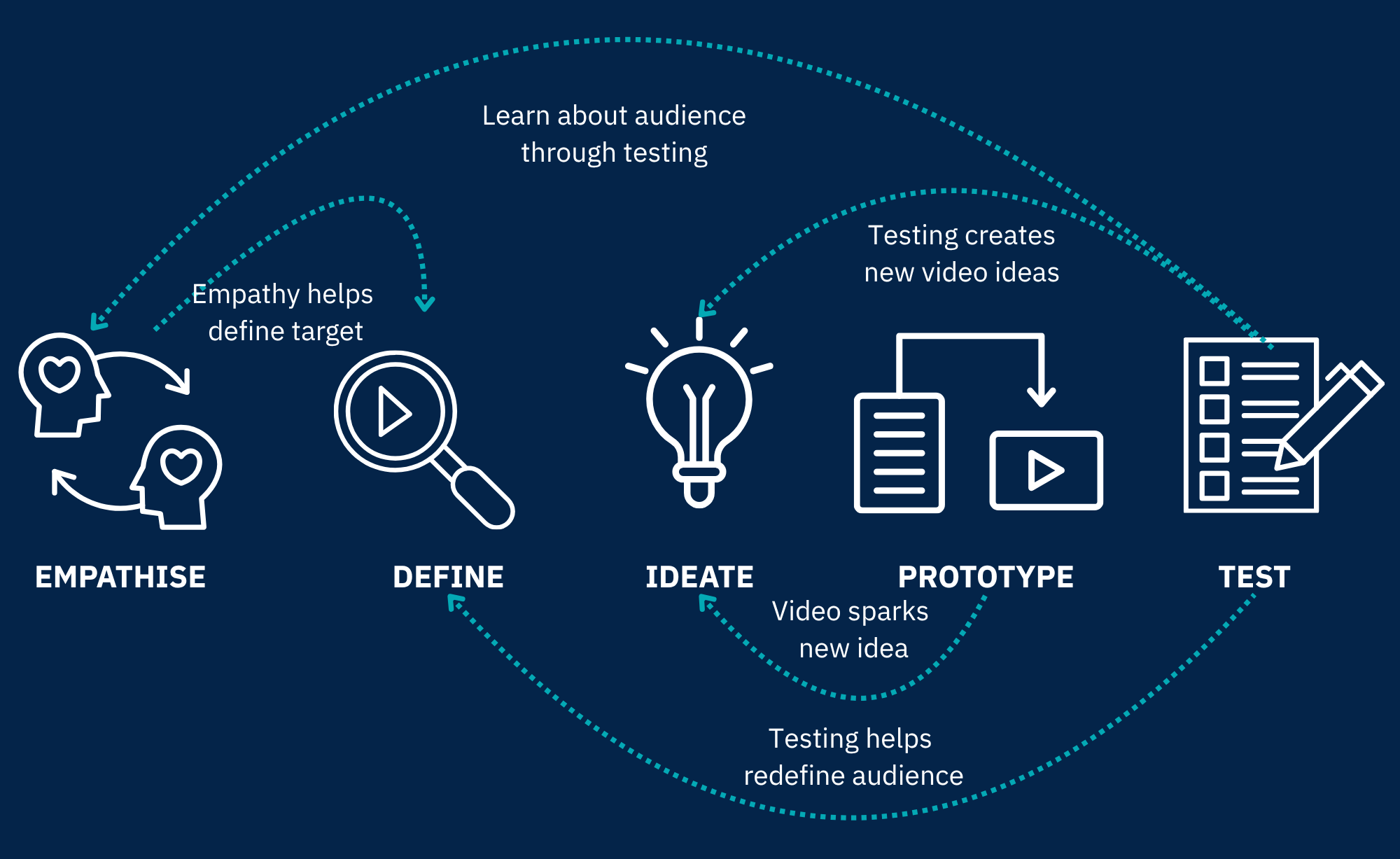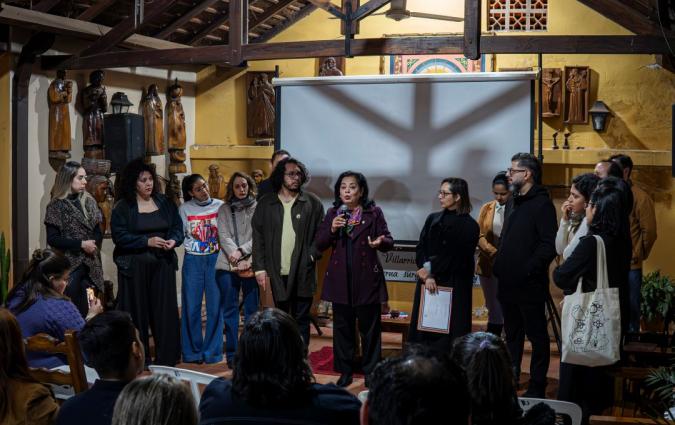In this piece
A people-centric philosophy of video journalism

A conversation between teenagers about which news sources to trust spurred Nabila Bana's project idea. Credit: Composite DALL·E & Screengrab/@subhi.albiddawy
In this piece
A blueprint for 9:16 storytelling | Five things we owe audiences | A roadmap to centre audience needs | Five things we owe digital journalistsA year-and-a-half ago, around the start of Israel’s war on Gaza, I listened in on a conversation between two teenagers as we travelled on a bus through West London.
From my raised seat behind them, I could see one scrolling through TikTok, showing her friend which creators she trusted to give her “the real news”. As a video producer and host for Al Jazeera’s digital media team at the time, my interest was piqued.
In a moment of deep political and economic uncertainty, her number-one source for news wasn’t a broadcaster or a newspaper; it was a Filipino-Palestinian fashion designer and creator from Texas who had become a news curator.
Her friend nodded knowingly, “The BBC could never.”
This exchange captured the fault lines in today’s news ecosystem: trust is fractured, attention is scarce, and the most influential voices are often far outside traditional newsrooms.
A blueprint for 9:16 storytelling
Vertical video is more important than ever, it's become the primary way under 35s consume news. Legacy newsrooms know this, but most are still struggling to cut through. The competition isn’t just other news outlets, it’s creators.
I arrived at the Reuters Institute searching for a “viral blueprint” for 9:16 storytelling in legacy news media: the killer format to win back audiences. Instead, I found something more urgent: the need for a philosophy of vertical video that puts human needs first – both the needs of the audiences who consume it, and the journalists who make it.
Over the span of six months, I’ve spoken to popular news creators with millions of followers like V Spehar (@underthedesknews) in the U.S. and Seba (@localwinemum) in Germany. I heard from my peers in legacy news organisations about the structural battles they face. And I’ve spoken to creators in completely different creative fields – from chefs to architects – to understand how they view the process of creation.
The result is a roadmap inspired by design thinking that envisions a newsroom focused on relevance, trust, and genuine connection.

Five things we owe audiences
1. Serve audience needs, not our hubris Audiences aren’t asking for less information; they’re asking for useful, relevant journalism delivered with care.
2. Be accessibly accountable Trust builds through ability, benevolence, and integrity — and through visible accountability. Creators win trust by showing process, correcting in public, and engaging directly. Legacy newsrooms can do the same, reopen comments where possible, respond, show your workings, and build real feedback loops.
3. Offer more than one flavour Generalist “one flavour” journalism struggles in a multi- taste economy. Own a niche: a topic, community, or soft entry point that meets people where they already care. Relevance is a function of specificity.
4. Diversify voice, power and perspective Representation isn’t a box‑tick; it’s editorial quality. Audiences recognise lived authority and cultural fluency on platform. Diversify who appears on‑screen and who decides off‑screen and empower them to shape agendas, not just fill formats.
5. Honour storytelling craft TV‑era rigidity underperforms on TikTok and Instagram. Narrative craft, second‑person address, emotional presence, and contextual clarity travel further than repackaged broadcast clips
A roadmap to centre audience needs
Serving audiences well means rethinking legacy assumptions about who we are for, how we measure success, and how we approach storytelling on the platforms where people now live their digital lives.
This roadmap, summarised in the graphic above and described in more detail in the PDF below, is not a magic formula for virality but it provides a cycle that can help newsrooms re-centre their video journalism for audiences by listening first, defining what need you are meeting, brainstorming solutions focused on service, trying new approaches in small ways and finally evaluating what resonates and refining the strategy.
Five things we owe digital journalists
Digital teams are too often under‑resourced, over‑extended, and excluded from strategy even as their work drives visibility and growth. These five principles define the conditions needed for innovative and sustainable journalism in 9:16.
1. Editor-in-chief driving a new culture Too many newsrooms still operate with TV- and print-first assumptions. Vertical video is seen as a distribution avenue rather than editorial work, leaving its makers sidelined from strategy.
2. Resources that reflect reality One person is often expected to script, film, edit, publish, and analyse, a workload that leads to burnout and shallow journalism.
3. Vision: Clarity of mission, metrics and purpose Many digital journalists are chasing metrics without knowing the bigger ‘why’. Audience development sits apart from production, and success is judged by reach alone.
4. Human-centred workplaces Daily exposure to distressing footage, relentless deadlines, and grind-culture expectations harm mental health and sap creativity.
5. Space to create and innovate Overloaded schedules leave no time to experiment, reflect, or refine craft, leading to safe, formulaic content.
This project is not a call for more content; it’s a call for more intention. The roadmap for audiences and the moves for journalists are starting points for re-centring vertical video around relevance, care, and craft and for building newsrooms where the people making it can thrive.
The full paper goes deeper, with examples from leading digital outlets, interviews with creators and editors, and practical tools for reshaping both output and culture. It offers a model that meets the realities of today’s platforms and audiences, while holding on to journalism’s core mission: to serve, connect, and strengthen public life.




